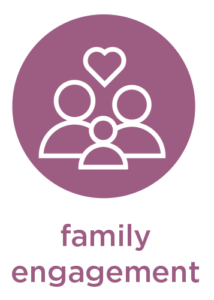We define comprehensive social and emotional learning as implementing four key components of SEL practices.

Climate and Culture
Building welcoming, safe and supportive environments for both students and staff members to foster learning and personal growth. A positive campus climate and culture sets the tone for youth and adults, and are the foundation for modeling and practicing SEL.
Culture and climate examples include welcoming students / staff members at the start of the day or the start of programming, creating group norms through respect agreements, and encouraging students / staff members to use designated calming areas if they begin to feel stressed, anxious, or overwhelmed.
We also include facilitating SEL Signature Practices as an important component of a positive culture and climate. Signature Practices have three primary elements:
- welcoming activities
- engaging practices
- optimistic closures.
Together, they reinforce skill-acquisition of SEL competencies and can be used during any group learning opportunity such as during class time, in staff meetings, and during after school activities.

Family Engagement
We know that parents and caregivers are the first teachers of social and emotional learning for their children, and therefore, partnering with families to support SEL skill development across all facets of a child's life, including at home, is an integral part of community-wide SEL growth. Some examples include sharing information about emotions and brain development with parents and caregivers, and adapting in- and out of school time practices for at-home use such as creating a calming area at home or developing a family treatment agreement to agree on family-wide expectations.
Resources:

SEL Explicit Skills Instruction
Teaching the five SEL competencies through a selected curricular program, which guides students through explicit naming and practicing to develop key SEL skills like positive relationship-building or listening to others’ perspectives, among others.
SEL Dallas sites are implementing either Sanford Harmony or Leader in Me as their explicit skills curriculum. CASEL has also developed a Program Guide with curriculum recommendations, inclusive of all grade levels.

Content Integration
Infusing SEL connections with ongoing learning, including specific subjects (math, reading, social studies, science, etc.) and / or activities (service projects, games and play, arts projects, etc.). Reminding students of regular connections between learning and SEL skills provides context and brings relevance to skill acquisition.
Content integration examples include a writing prompt exploring the values of friendship, project-based learning that develops student voice and leadership, or art projects where students explore and share aspects of their identity (and learn about the identity of others).
SEL Dallas has finalized a set of SEL Learning Standards to help describe what we want students (and adults) to know and do within each competency.











